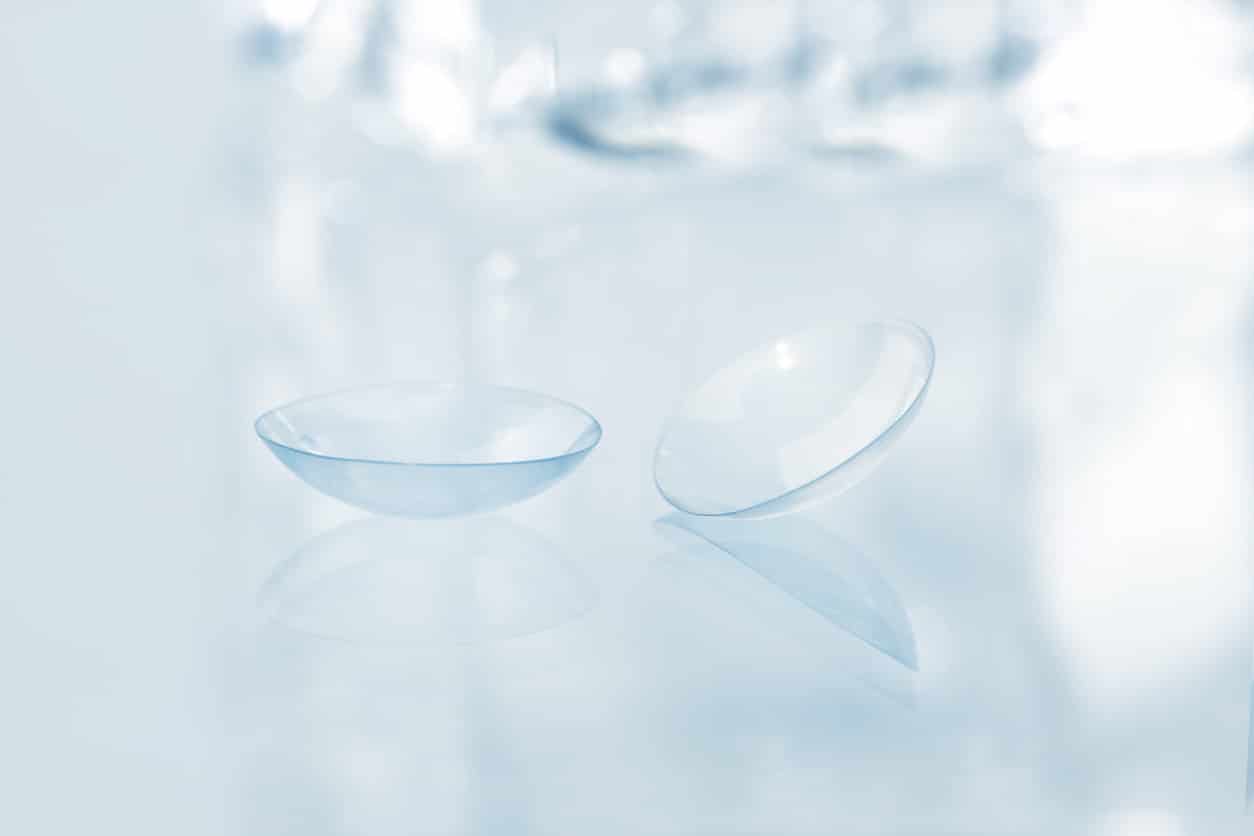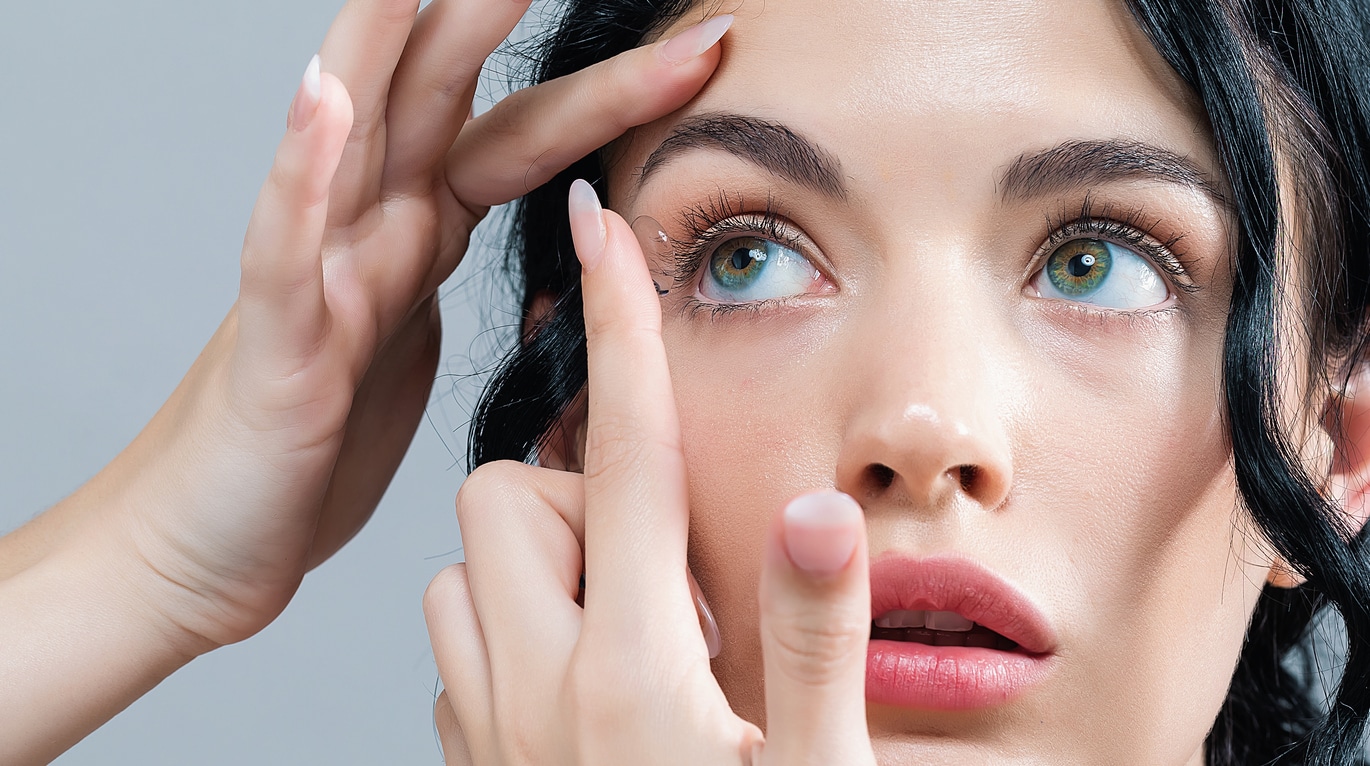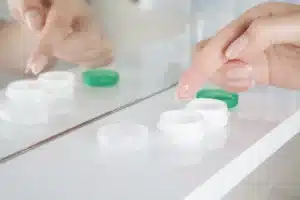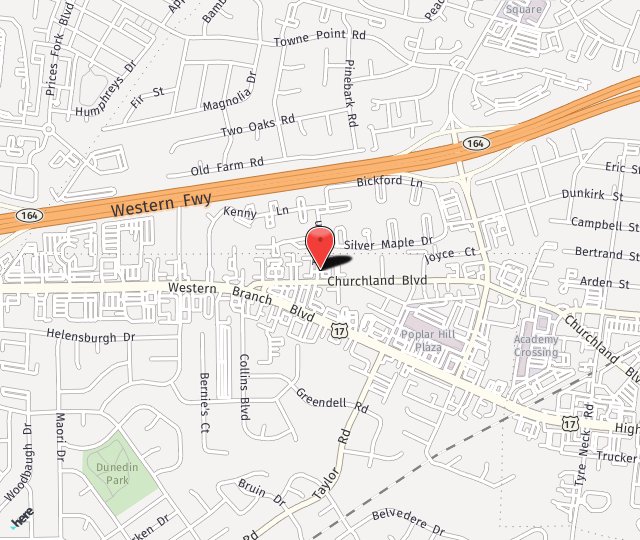Contact lenses are small thin disks that float on the surface of the eye in order to help provide vision correction. With optical technology advancing, contact lenses are an option for almost everyone, regardless of the type or extent of their vision problems. This includes patients with astigmatism and those who need bifocal or multifocal lenses. But since they are a medical device, they do require some compliance on the part of patients with guidelines for proper care and use.
At Southside Eye Care in Chesapeake, VA we work with you to find the correct contact lens and prescription to best help your vision. No longer do you need to worry about the inconveniences that come with glasses.

Contact Lens Supplies
Contact lenses should always be stored in the solution recommended by an ophthalmologist. The fresh solution is required every single time a patient is storing the lenses. It is not safe to reuse solution as it can harbor bacteria and debris. Rinse the contact lens case with the solution after its use and leave the caps off to store the case. Cases need to be replaced once every three months, or sooner if build-up has begun to form.



Wearing schedule for contact lenses
There are many options available today such as daily wear, extended wear and disposable lenses to suit each patient's lifestyle. However, they all have certain guidelines that need to be followed to maintain eye health. Wearing lenses for longer than the recommended time periods may result in the development of an infection or potentially set the stage for long-term damage to the surface of the eye. Except in the case of specific extended wear lenses, contacts should never be worn overnight.
Do's and don'ts of contact lenses
Wearing contact lenses is easy and comfortable for most individuals, provided that they follow their doctor's instructions and care for their lenses. To keep the eyes healthy as a regular contact lens wearer, follow a few basic rules.
- Attend follow-up appointments on a regular basis
- Take your lenses out each night at least one hour before going to sleep unless meant for extended use
- Do not exceed the recommended time period for wearing them even if they are not causing any discomfort
Do not wear them when eyes are painful, red or irritated. Remove the lenses, then clean and store them until the eyes are no longer experiencing these symptoms. If any uncomfortable symptoms return upon renewed use of the contact lenses, make an appointment for an office visit.
Contact Lens Use

Prior to putting contact lenses in, it is essential to thoroughly wash and dry your hands. Carefully remove a lens from the storage case and gently rinse it with a solution. Then place the contact lens on the tip of your finger. While looking up, pull on the upper and lower eyelids to create extra space and place the lens on the lower portion of the eye.
Close the eye briefly and the contact lens should settle right into place.
When removing contact lenses, the hands should once again be thoroughly washed and dried. Have the lens case prepared by filling each side with a fresh solution. While looking up, pull on the upper and lower eyelids. Use a finger to move the lens downward, then gently pinch it to pluck the lens off the surface of the eye. In the palm of your hand, clean the contact lens using the physician-recommended solution and place it in the case.
Contact Lens FAQs
Are contact lenses difficult to care for?
When you stroll through the grocery store or pharmacy you come across a dizzying array of contact lens solution options. This can seem daunting, but it’s not — caring for your disposable contact lenses is easier now than ever. The next time we see you, ask about all the different contact lens solutions and what options are right for you. Otherwise, this is the basic process of keeping your soft contact lenses clean and happy.
- 1. Wash your hands with simple soap. Dry your hands with a lint-free towel.
- 2.Remove one lens and clean it with the recommended solution. Cleaning removes protein buildup, cosmetics, dirt, and other debris that will impact the comfort of your lenses. The FDA recommends that you rub the lens in the palm of your hand with a few drops of solution for a few seconds. This applies even if you’re using a “no-rub” solution.
- 3.Rinse the lens again to remove the loosened debris.
- 4.Fill your clean lens case with solution and place the now-clean lens in it. Don’t top off old solution; only use a new solution every day. Disinfecting kills microorganisms on the lens.
- 5.Now do the same with your other lens.
See that was easy. That’s all you need to do to care for your contact lenses.
Who can wear contact lenses?
Just about anyone. You may have heard otherwise, but thanks to advances in contact lens technology in recent years, just about everyone is a good fit for contact lenses. There are now bifocal contacts for people with presbyopia. They are toric soft and rigid lenses that correct for astigmatism. Plus, custom lenses can correct for even the most challenging prescriptions.
At what age can a child start wearing contact lenses?
Over half the surveyed optometrists feel it is appropriate to introduce children to soft contact lenses around the age of 12.
Can I wear contact lenses while playing sports?
Many people wear soft contact lenses specifically to play sports. That’s because the lenses correct for vision problems that would otherwise hold them back in the sport. Old hard contacts could sometimes pop out of a person’s eye when playing sports or doing other activities, but those are stories from the dark ages. Modern soft contacts adhere very smoothly to the cornea and they do not dislodge unexpectedly.
Are contact lenses hard to put in and take out?
At first, it can seem difficult to both place your contact lenses on your eyes and to remove them from your eyes. After all, it seems as if you have to basically poke yourself in the eye. But our doctors will show you exactly how to do it, and you will quickly become an expert at placing and removing your lenses.
Can I sleep with my contact lenses in?
Although some soft lenses are approved by the FDA for extended wear, including sleep, most eye care professionals (including the team at Southside Eye Care) agree that it is best to remove them when you go to bed. That gives your eyes a chance to rest, and it ensures your lenses remain as clean as possible. The convenience of sleeping in your contacts isn’t worth the possibility of an eye infection.
Do Contact Lenses Hurt?
Modern contact lenses are so comfortable you will likely forget you’re wearing them just about all of the time. If your contacts hurt when you wear them something is wrong. If your contact lenses are hurting your eyes, we need to know about it at Southside Eye Care.
Southside Eye Care proudly provides patients from Chesapeake, Norfolk, Virginia Beach, VA and the surrounding areas with Contact Lenses. Contact us at 757-484-0101 or fill out a Contact Form here.




